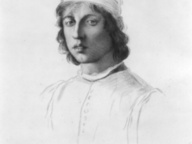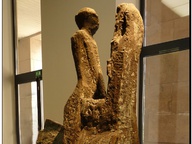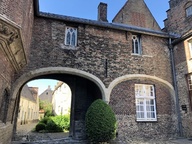Japanese lacquer and Emakimono

Lacche e Emakimono giapponesi, MAO - Museo d'Arte Orientale, Torino
From 01 Luglio 2014 to 31 Agosto 2014
Turin
Place: MAO - Museum of Oriental Art
Address: via San Domenico 11
Times: Tuesday to Sunday 10 am - 6 pm
Ticket price: full € 10, reduced € 8
Telefono per informazioni: +39 011 4436927
E-Mail info: mao@fondazionetorinomusei.it
Official site: http://www.maotorino.it
As part of the program of periodic rotations made ??for proper storage of more delicate materials, from July 1, MAO Museum of Oriental Art has the pleasure to propose to the visitors to its Japanese lacquer, which is now missing from the exhibition of more than four years.
The great object of the window replacements, placed at the beginning of the gallery dedicated to Japan, hosted and continue to host valuable objects of the Edo period (1603-1868), Meiji (1868-1912) and Taisho (1912-1926).
The most important lakes exposed is a great ryoshibako (box for paper and documents) in gilded wood, the mid-1700s, which features on the cover a landscape with cherry trees in bloom. The decoration, made ??of metal powders applied according to the technique maki-e ("painting sprinkled") is a valuable example of the very high technical and artistic level reached by the Japanese lacquers, and makes this case one of the most beautiful objects of applied art supplied with the MAO. Noteworthy is also an exquisite inro (container he carried on his belt) coeval with mother of pearl inlay depicting a heron on one side and on the arch of a bridge.
With the new rotation will also be reintroduced in the same showcase a emakimono (roll long and narrow format) signed "Buncho", painted in ink on silk with stems and leaves of bamboo. Tani Buncho (1763-1840) was one of Japan's most influential artists of his time. Equipped with great technical ability, he could juggle with different painting styles, as well as having innate quality instruction and great knowledge of ancient painting, and Chinese is Japanese.
The great object of the window replacements, placed at the beginning of the gallery dedicated to Japan, hosted and continue to host valuable objects of the Edo period (1603-1868), Meiji (1868-1912) and Taisho (1912-1926).
The most important lakes exposed is a great ryoshibako (box for paper and documents) in gilded wood, the mid-1700s, which features on the cover a landscape with cherry trees in bloom. The decoration, made ??of metal powders applied according to the technique maki-e ("painting sprinkled") is a valuable example of the very high technical and artistic level reached by the Japanese lacquers, and makes this case one of the most beautiful objects of applied art supplied with the MAO. Noteworthy is also an exquisite inro (container he carried on his belt) coeval with mother of pearl inlay depicting a heron on one side and on the arch of a bridge.
With the new rotation will also be reintroduced in the same showcase a emakimono (roll long and narrow format) signed "Buncho", painted in ink on silk with stems and leaves of bamboo. Tani Buncho (1763-1840) was one of Japan's most influential artists of his time. Equipped with great technical ability, he could juggle with different painting styles, as well as having innate quality instruction and great knowledge of ancient painting, and Chinese is Japanese.
SCARICA IL COMUNICATO IN PDF
COMMENTI

-
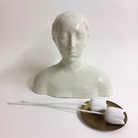 Dal 26 febbraio 2025 al 05 maggio 2025
Venezia | Museo Fortuny
Dal 26 febbraio 2025 al 05 maggio 2025
Venezia | Museo Fortuny
-
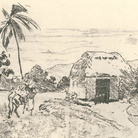 Dal 01 marzo 2025 al 29 giugno 2025
Torino | Museo Storico Nazionale d’Artiglieria dell’Esercito – Mastio della Cittadella
Dal 01 marzo 2025 al 29 giugno 2025
Torino | Museo Storico Nazionale d’Artiglieria dell’Esercito – Mastio della Cittadella
-
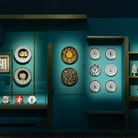 Dal 27 febbraio 2025 al 29 giugno 2025
Milano | Palazzo Reale
Dal 27 febbraio 2025 al 29 giugno 2025
Milano | Palazzo Reale
-
 Dal 28 febbraio 2025 al 09 giugno 2025
Roma | Accademia di Francia a Roma – Villa Medici
Dal 28 febbraio 2025 al 09 giugno 2025
Roma | Accademia di Francia a Roma – Villa Medici
-
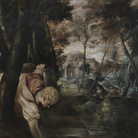 Dal 22 febbraio 2025 al 29 giugno 2025
Forlì | Museo Civico San Domenico
Dal 22 febbraio 2025 al 29 giugno 2025
Forlì | Museo Civico San Domenico
-
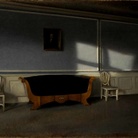 Dal 21 febbraio 2025 al 29 giugno 2025
Rovigo | Palazzo Roverella
Dal 21 febbraio 2025 al 29 giugno 2025
Rovigo | Palazzo Roverella
